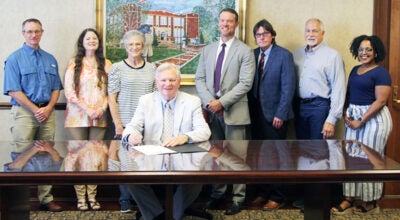Natural disasters more deadly in South
Published 1:31 am Wednesday, January 7, 2009
Hurricanes and tornadoes may be the biggest headline makers, but a recent study shows flooding and heat waves contribute to the most natural disaster related deaths in the South.
In fact, a recent study by the Hazards and Vulnerability Research Institute at the University of South Carolina concluded that the South has more deaths from natural disasters than any other part of the country.
“That’s a little surprising,” said Kristi Stamnes, director of the Covington County Emergency Management Agency. “I’m sure in our area it’s the unexpected weather that can really cause the problems — afternoon thunderstorms and things that pop up suddenly. People don’t always realize that there are a lot of consequences if rivers start to rise.
“Hurricanes and tornadoes we usually know are coming and we can plan for them. It’s the afternoon storms that pop up and catch people by surprise that can be the most dangerous.”
The study looked at deaths caused by natural disasters from 1970 through 2004, and found that the South — and particularly the Gulf Coast region — is the area where people are most likely to be killed by natural disasters.
It also showed that flooding has caused 14 percent of the nearly 20,000 natural-disaster deaths during the study’s time period. Heat wave related deaths were slightly higher, at 19.6 percent.
Other major categories in the study were high winds and hail from thunderstorms (18.8 percent), winter weather (18.1 percent), tornadoes (11.6 percent), lightning (11.3 percent), wildfires or hurricanes (less than 5 percent) and storm surges or rip currents (2.3 percent).
“One of the things that people don’t realize is that flooding can occur even if it’s nice and sunny out,” Stamnes said. “Because we’re so far south, everything north flows down toward us and if there’s a storm in the northern part of the state, our rivers can be affected several days later.”
Jeffery Biggs, executive director of the Covington County chapter of the American Red Cross, said the chapter recently had to respond to a family displaced by flooding.
“Back in November, when there were those heavy rains before Thanksgiving, we had a family who had been flooded out,” Biggs said. “People may think they’re fine if they don’t live near a river or creek, but it only takes two to three inches of moving water to knock down an adult. Water has a lot of force and can also carry other debris that could be dangerous.”
Stamnes said she was not surprised that heat waves were such dangerous killers.
“Our summers can get really hot and dry around here,” she said. “It’s important for people to be educated about the proper ways of cooling down and keeping hydrated.”
Biggs added that several factors could go into the study’s finding that the South is the highest region for natural-disaster deaths.
“Because we live in the South, people might think that being in the heat is just a part of living here,” he said. “It is, but at the same time, there are ways you need to protect yourself — people need to realize that the heat is the single most dangerous thing we deal with in the South.
“I think it’s important to note that a lot of people in this region also don’t have the means of leaving if they’re threatened by a natural disaster,” Biggs added.
Regardless of the kind of danger, Stamnes said it is vitally important for citizens to remain informed anytime their area is threatened by dangerous weather.
“We get our information directly from the National Weather Service and pass it on to our citizens,” she said. “There are even sometimes warnings for heat waves. It’s important for us to stay informed anytime there’s something dangerous in the area.”





